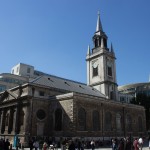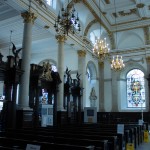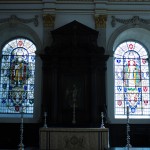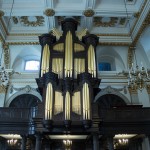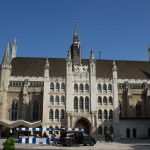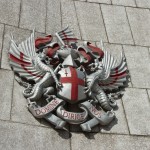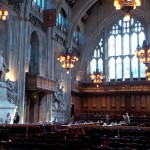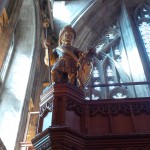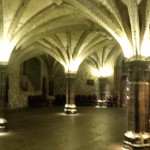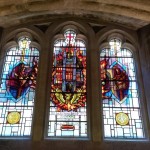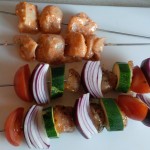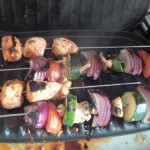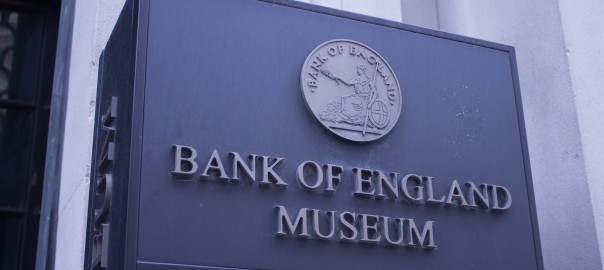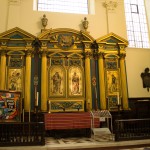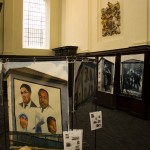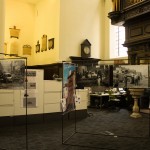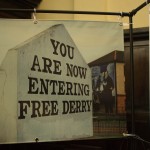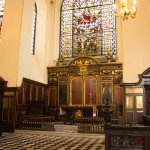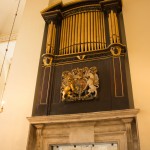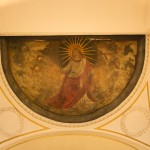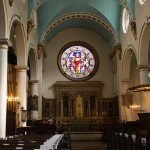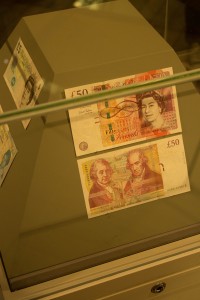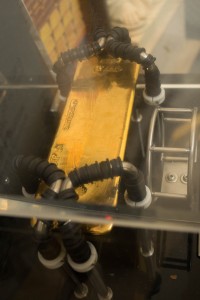Today I headed back into the City of London for a tour of Guildhall.
First though, I popped into the church of St Lawrence Jewry next door, which is actually a very recent church building, rebuilt after being bombed in WW2. The Jewry part of the name refers to this being in the Jewish part of the city until 1290.
Our tour guide, Pat, advised that this tour only lasts an hour, but could easily last well over two, so would be fairly rushed. We were also told that photos could be taken but discretely, so apologies that the interior photos are taken on my phone rather than my camera.
The tour started in the Great Hall which was being set up for the afternoon’s Court of Common Council meeting. A few members of the group were training to be Blue Badge Tourist Guides and were scribbling frantically in their notebooks. The remainder of us just listening as Pat explained all the statues in the hall and the symbolism of all the particular objects. The main theme within the entire building is of history and tradition, combined with rebuilding following the Great Fire of London and the Blitz. Many of the rooms have changed usage over the various centuries although most of them are used as meeting rooms today, mainly to be hired out to businesses or for wedding receptions.
We then had the option of coming back in an hour to see the council meeting. However I had to be getting home to get the evening’s meal ready (even if Thameslink had other plans).
My meal for this evening was another one suggested by colleagues at work – kebabs.
I chose to make two different kebabs: “Chicken kebabs” from “Nosh for graduates“, and “Yogurt-Marinated Chicken Kebabs with Aleppo Pepper” from Serious Eats.
Both of these recipes wanted to make a marinade which the chicken would then soak in for a few hours before cooking. This made the cooking process seem less onerous as it broke it down into two distinct parts. The recipes were designed for BBQs and large quantities so I reduced all of the ingredients in each by about 60% as I only planned on making two skewers of each. I did make a few deviations from the recipe. In the first recipe I swapped mushrooms for courgette, and, whilst writing this, I realised that I missed out the red pepper. In the second recipe I used smoked paprika and dried crushed chili peppers as the first step. I also swapped red wine vinegar for white wine vinegar as that’s what I already had, although I’m sure it made absolutely no difference.
I then grilled the kebabs on my George Foreman grill (which will now need a lot of cleaning) and served it with pitta bread and hummus. I did look at making my own hummus, however since I don’t own a food processor or a blender or a pestle and mortar (and no intention of buying any of them just for this) I didn’t. It was a fairly simple recipe and it all tasted good.

